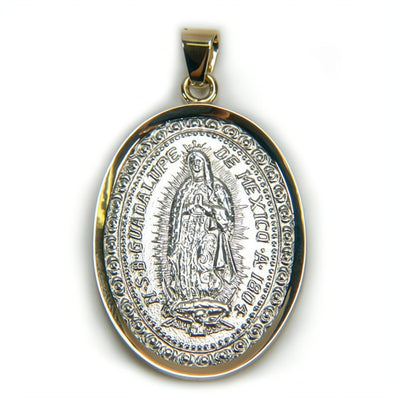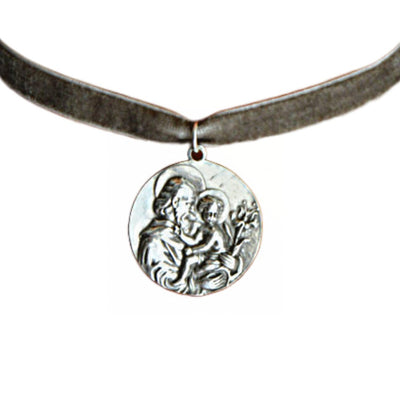Cathedrals: The Pillars of Catholic Faith, History, and Architecture
Listen - Produced by Notebook LM using AI
Introduction
Catholic cathedrals have stood as monumental expressions of faith, artistry, and history for over a thousand years. These grand structures, often towering over cities with soaring spires and intricate stained glass, serve not only as places of worship but also as symbols of the enduring presence of the Catholic Church.
Cathedrals reflect Catholicism's deep spiritual heritage, whether built in Romanesque simplicity or Gothic grandeur. But what truly distinguishes a cathedral from a church? Why are they considered such important landmarks of faith and culture?
In this blog, we’ll explore cathedrals' origins, purpose, and architectural brilliance and uncover their significance in Catholic life Today.
What is a Cathedral?
A cathedral is more than just a large church—it is the principal Church of a church, where the bishop’s seat (cathedra) is located. The term comes from the Latin word "cathedra," meaning "chair," and signifies the bishop’s teaching authority.
Unlike ordinary parish churches, cathedrals:
✅ Serve as the spiritual and administrative center of a diocese.
✅ Host major liturgical celebrations led by the bishop.
✅ Often function as pilgrimage sites and centers of Catholic culture.
Many of the world's most famous Catholic landmarks—such as Notre Dame in Paris, St. Peter’s Basilica in Rome, and Chartres Cathedral—serve as testaments to the Church’s role, Church’s faith, and architectural innovation.
A Brief History of Catholic Cathedrals
The history of cathedrals mirrors the evolution of Christianity and reflects changing artistic styles, theological priorities, and cultural influences.
1. Early Christian Basilicas (4th - 9th Century)
📖 After Christianity became legal in the Roman Empire (313 AD) under Emperor Constantine, large basilicas were built for public worship.
🔹 Example: Old St. Peter’s Basilica (Rome) influenced church design for centuries.
2. Romanesque Cathedrals (10th - 12th Century)
🏛️ Known for their thick stone walls, rounded arches, and fortress-like structures, Romanesque cathedrals reflected an era of stability and monastic influence.
🔹 Example: Santiago de Compostela Cathedral (Spain)—a primary pilgrimage site.
3. Gothic Cathedrals (12th - 16th Century)
🌟 The Gothic era introduced taller, light-filled cathedrals designed to inspire awe with their pointed arches, ribbed vaults, and flying buttresses.
🔹 Example: Notre-Dame de Paris (France)—famous for its stained glass and detailed sculptures.
4. Renaissance and Baroque Cathedrals (16th - 18th Century)
🎨 Inspired by classical art and grandiosity, these cathedrals emphasized symmetry, domes, and ornate decoration.
🔹 Example: St. Peter’s Basilica (Vatican City)—home to Michelangelo’s Pietà.
5. Modern Cathedrals (19th Century - Present)
🏗️ Today, TodayedrTodaylend traditional and contemporary designs, reflecting new materials and styles while preserving the sacredness of Catholic worship.
🔹 Example: Sagrada Familia (Spain)—a unique architectural marvel still under construction.
The Symbolism in Cathedral Architecture
Catholic cathedrals are designed to elevate the soul, using architecture as a means of spiritual storytelling.
1. The Cathedral Floor Plan: A Journey of Faith
🛤️ Many cathedrals are built in the shape of a cross, symbolizing Christ’s crucifixion. Walking from the entrance to the altar represents the believer’s journey toward holiness and salvation.
2. Stained Glass Windows: The Bible in Color
🔆 Gothic cathedrals feature breathtaking stained glass windows that depict biblical stories, allowing light to illuminate sacred teachings.
🔹 Example: Chartres Cathedral’s Rose Window—a masterpiece of color and storytelling.
3. The High Altar: The Heart of Worship
⛪ The altar, often the most ornate part of the cathedral, is where the Eucharist is celebrated, signifying Christ’s presence in the Church.
4. Churchrchd Towers: Reaching Toward Heaven
📍 Cathedrals often feature tall spires, pointing toward God and symbolizing the soul's aspiration toward heaven.
Why Are Cathedrals Important Today?
Although modern life has changed, cathedrals are vital in the Catholic faith and culture.
1. Centers of Catholic Worship
🙏 Daily Masses, sacraments, and special celebrations such as Easter and Christmas liturgies unite the Catholic community in prayer and devotion.
2. Pilgrimage and Tourism
🌍 Many Catholics travel to historic cathedrals to experience their spiritual and artistic richness, making them popular pilgrimage sites.
3. Preserving Christian Art and History
🖼️ Cathedrals house priceless relics, statues, and sacred artwork, helping preserve the history of Catholicism.
4. Community and Charitable Work
🤝 Cathedrals often serve as community hubs, offering charity programs, educational initiatives, and outreach services for people experiencing poverty.
How to Bring the Beauty of Cathedrals Into Your Home
Even if you can’t visit a cathedral in person, you can incorporate its beauty and sacredness into your daily life through:
✨ Religious Artwork – Hanging Catholic paintings or icons inspired by cathedral art.
📿 Catholic Jewelry – Wearing a cross necklace or saint medal symbolizes faith.
🕯️ Home Altars – Creating a prayer space with candles, statues, and devotional items.
At Guadalupe Gifts, we offer handcrafted Catholic art and jewelry inspired by the beauty of historic cathedrals.
Conclusion: Cathedrals as Living Testaments of Faith
Catholic cathedrals are more than magnificent buildings—they are sacred places that have witnessed centuries of prayer, devotion, and history. Whether through their breathtaking architecture, deep symbolism, or role in Catholic worship, cathedrals continue to inspire the faithful around the world.
By exploring and appreciating these sacred spaces, we connect with the rich heritage of our faith, deepening our spiritual journey and bringing a piece of that heavenly beauty into our lives.
Would you like to carry a piece of Catholic tradition with you?
👉 Explore Our Faith-Inspired Jewelry & Art: GuadalupeGifts.com
Top 3 Church-Approved Resources for Further Learning
- The Vatican’s Official Guide to Cathedrals – www.vatican.va
- United States Conference of Catholic Bishops (USCCB) on Sacred Architecture – www.usccb.org
- The Catholic Encyclopedia on Cathedrals – www.newadvent.org




















Leave a comment